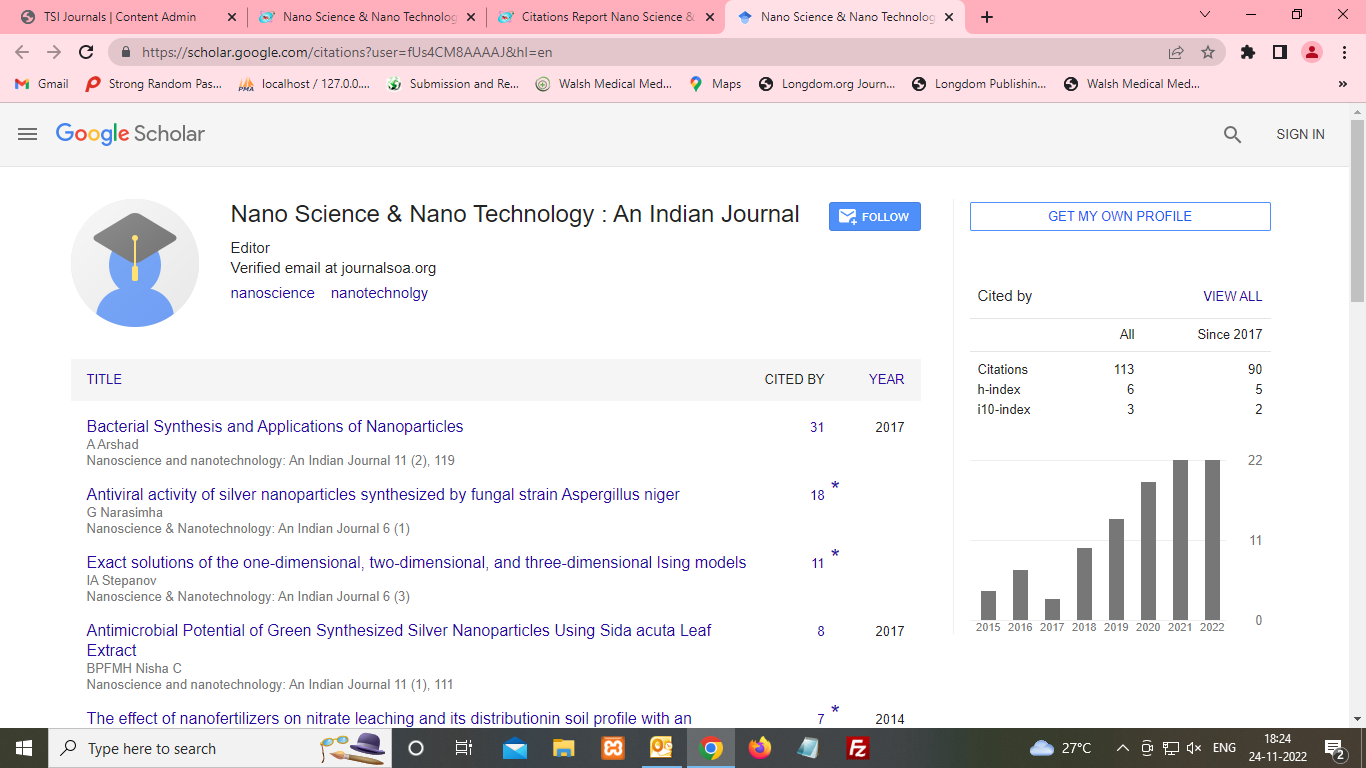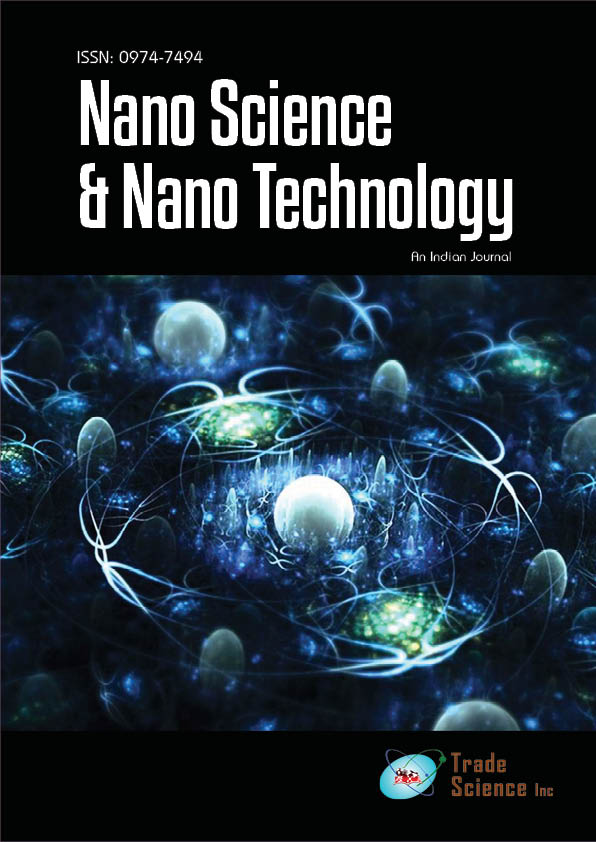Current opinion
, Volume: 16( 6) DOI: doi: 10.37532/ 0974-7494.2022.16(6).180A brief analysis of novel Nano pharmaceuticals related to Nano drugs
- *Correspondence:
- Elisa May Editorial office, Nanoscience & Nanotechnology: An Indian Journal, UK, E-mail: mayelisa34@yahoo.com
Received: Nov 2, 2022, Manuscript No tsnsnt-22-83273; Editor assigned: Nov 4, 2022, PreQC No. tsnsnt-22-83273 (PQ); Reviewed: Nov 16, 2022, QC No tsnsnt-22-83273 (Q); Revised: Nov 19, 2022, Manuscript No tsnsnt-22-83273 (R); Published: Nov 30, 2022, doi: 10.37532/ 0974-7494.2022.16(6).180
Citation:May E. A Brief Analysis of Novel Nano Pharmaceuticals Related to Nano Drugs. Nano Tech Nano Sci Ind J. 2022;
Abstract
Nanomedicine is a term used to describe a tool that may be used in the field of medicine that can diagnose, treat, and even cure a condition. The application of nanomaterials, such as biocompatible nanoparticles made of nanoscale materials and including Nanorobots, for illness detection, monitoring, and control in living organisms
Introduction
Nanomedicine is a term used to describe a tool that may be used in the field of medicine that can diagnose, treat, and even cure a condition. The application of nanomaterials, such as biocompatible nanoparticles made of nanoscale materials and including Nanorobots, for illness detection, monitoring, and control in living organisms.
The application and usage of nanotechnology, a subset of nanoscience and nanomedicine, for the treatment of significant medical conditions may be found in numerous developing nations. The primary industrial and purifying processes where nanotechnology is used include. To transfer heat, light, or other substances to particular types of cells, such as cancer cells, nanotechnology-based medical research is currently being researched.
The delivery of medications to cancer cells using nanoparticles is being developed as a use of nanotechnology. Infected cells can be directly treated by using particles that have been designed to attract them. Chemicals, medicines, medications, injectables, dispensaries, tablets, capsules, and a variety of other pharmaceutical components are all included in the term "pharmaceuticals" and can be used on any living thing. The medications that are produced from nanomaterials are referred to as Nanopharmaceuticals.
Due to their small size compared to their bulk-phase equivalents, high surface-to-volume ratio, and the potential to modify their properties, nano pharmaceuticals are a relatively new class of therapeutic nanomaterials that frequently feature distinct " nano properties" with physiochemical qualities.
The nonpharmaceutical combined with other medicinal substances to create a new nanosubstance that aids in the treatment of some microscopic and invisible organisms that are present in daily life The medications produced from different chemical compounds and linked to nanomaterials are known as nano drugs since they are made of a special, little substance. The medications that can be produced using nanomedicine and have their particle size are known as nanodrugs. There are many different kinds of nano-drug systems that are created mostly with the aid of medications and are enclosed in a carrier form, such as dendrimers, liposomes, micelles, and polymeric nanoparticles. A nanodrug has many pharmacokinetic benefits, including targeted drug administration, high metabolic stability, high membrane permeability, increased bioavailability, and long-lasting effects. As a result, nano drugs can be used to change the biopharmaceutical and pharmacokinetic characteristics of novel drugs and their delivery systems. A technique that has promise for obtaining drug characteristics is the nanodrug system. When it comes to the physicochemical characteristics of the nanodrug compounds, such as size, surface charge, and hydrophobicity, smaller nano drugs exhibit better transcellular absorption via follicle-associated epithelia than do bigger ones. The size and form of nanoparticles can enter cells through endocytosis, pinocytosis, pinocytosis, and phagocytosis. In contrast, these larger particles can be eliminated from the bloodstream by the reticuloendothelial system's macrophages.
The capacity of their epithelial cells to transport nanodrugs is increased as a result of the positive surface charges of the drugs' sulphate, sialic acid, and sugar moieties directly interacting with the molecules' negative charges.
This can function as a ligand for the receptors that the nano drugs can express on the cellular membrane, which will facilitate the transcellular transport of the drug and its constituents. They are also known as membrane permeation enhancers. But these medications are linked to nano biopharmaceutical agents and their particles, which deserve credit for their beneficial drug delivery capabilities and several ailments like lung, skin, and other cells with the translocation of epithelial cells. Therefore, the nanodrug approach the nanomedical substances and their particles, which should improve the therapeutic potential of entrapped pharmaceuticals and aid in the acceleration of pharmaceutical development. It is possible to conclude such Nanodrug techniques that provide a solution to the biopharmaceutical issues associated with inaccuracies in drug release control, poor stability, constrained pharmacokinetic behaviour, and toxicity of the active component.

